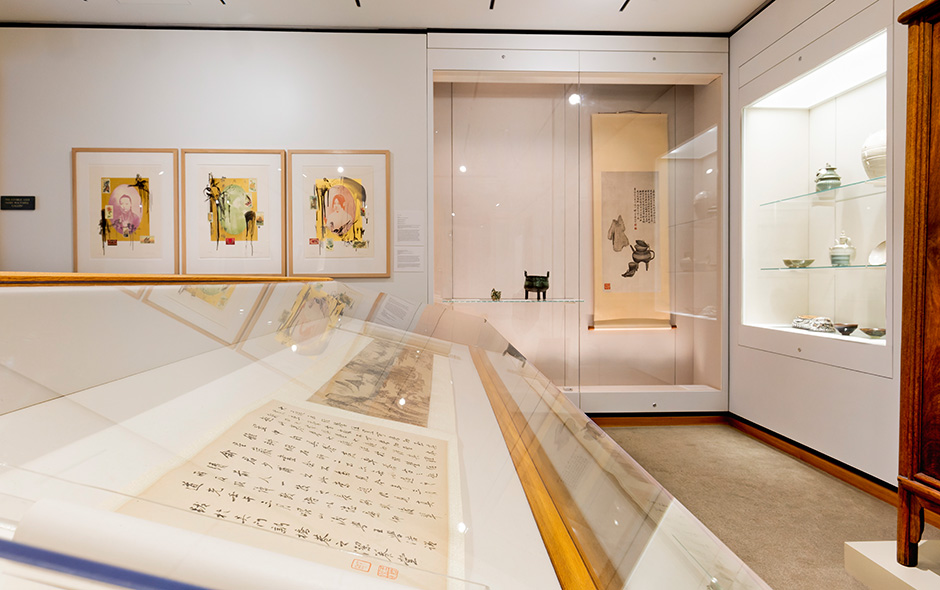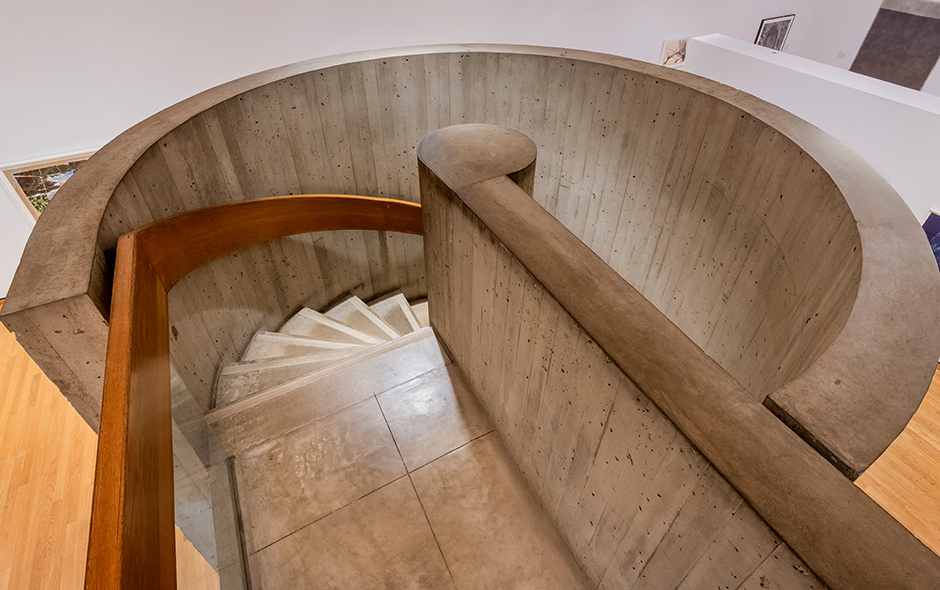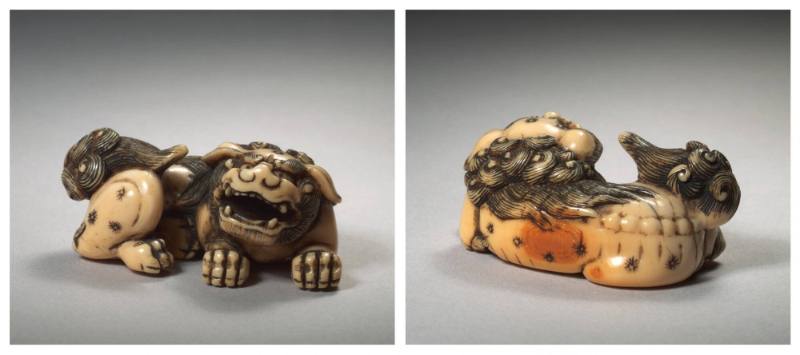
Object Details
Culture
Japan
Date
19th century
Medium
Carved lacquer
Dimensions
11/16 x 1 9/16 inches (1.7 x 3.9 cm)
Credit Line
Bequest of Carl A. Kroch, Class of 1935
Object
Number
99.089.043
BRIEF DESCRIPTIONThis is a netsuke made of lacquer, with an image of two boys on a toy horse on one (…)
BRIEF DESCRIPTIONThis is a netsuke made of lacquer, with an image of two boys on a toy horse on one side, and a floral decoration on the other.WHERE WAS IT MADE?This netsuke was made in Japan.HOW WAS IT MADE?Japanese lacquer (urushi) is derived from the sap of the Rhus verniciflua tree, a member of the plant family that includes poison oak, poison ivy, and poison sumac. Its extreme toxicity poses a danger for lacquer artisans. Lacquer is made by carefully building up thin layers of sap and letting each layer dry under warm, humid conditions. Once dry, the sap becomes rigid and impervious to water, insects, and most solvents. During the Kamakura Period (1185-1333), the Japanese were said to have adapted the complicated, heavily layered red lacquer technique called “tsuishu,” which was imported from China. This technique involved applying many layers of lacquer and then carving into them to produce a relief design. Iron oxide or cinnabar was added to the sap to give it the bright red color, and black layers (darkened with iron oxide or carbon) were often interspersed with red layers to lend more three-dimensionality to carved pieces.HOW WAS IT USED?During the Edo period (1603-1868), the standard attire for a well-dressed Japanese man consisted of a kimono tied with a sash. Because kimonos had no pockets, accessory bags and carrying cases (called sagemono: hanging things) were used to hold personal items such as money, medicines, tobacco and seals (a stamp carved with the owner’s name). Silken cords, attached to the sagemono, were threaded through the kimono sash (obi). A toggle, called a netsuke, was attached to the other end of the cord to prevent it from slipping through the sash. To see a netsuke with an inro—one popular type of sagemono that consisted of small, stacked compartments for holding medicines—search for object number 98.087.006 in the keyword search box.The term netsuke comes from the words ne, meaning ‘root’ and tsuke, meaning ‘to fasten.’ Early netsuke may have been made from found objects such as pieces of roots, nuts, coral and bone. Over time, netsuke production became more and more varied, refined, and innovative, reaching a high point in the early 19th century. Subjects and decoration of netsuke and sagemono reflected the tastes and aspirations of their owners, often infused with an element of comic irony. As clothing traditions modernized, netsuke came to be collected separately from sagemono, and appreciated as sculptural gems in their own right.WHY DOES IT LOOK LIKE THIS?The form of this netsuke is called manju. The shape is similar to the flat, round sticky rice cakes of the same name.The image of the boy riding on the toy hobby-horse may be a reference to the year of the horse in the Chinese zodiac calendar. Hobby-horses were used both to commemorate the year of the horse, and in New Year’s celebrations. The Chinese calendar follows a sixty-year cycle, broken into five twelve-year units. Each of the twelve years is associated with an animal. The day is also divided into twelve periods, each associated with one of the twelve animals. The animals associated with the year and the hour of one’s birth have long been used in some Asian countries to predict one’s character and personality traits. The animals of the zodiac became popular subjects for netsuke during the 19th century, as people became interested in purchasing netsuke depicting the animal associated with their birth year, as well as building collections of all twelve animals. The twelve animals are rat, ox, tiger, rabbit, dragon, snake, horse, goat, monkey, rooster, dog and pig.In the zodiac, the horse is associated with qualities such as agility, intelligence, and flexibility.












